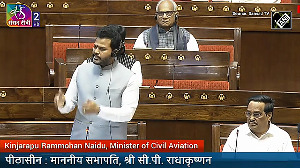Part I: Tips to make your business writing shine
In my previous article, I highlighted tips to inject life in your business writing. Poor formatting and a lack of structure are common complaints that can dilute your actual content. For instance, there is nothing worse than seeing 10-12 lines of words with no paragraphs.
Readers will expect you to answer the question, 'so what is your point?' early in the document, regardless of the type of document they are reading. Structuring a document, therefore, becomes critical for your content to achieve its goal. Here's what you must keep in mind:
Organising content
Content refers to the information included in the message. Your goal should be to include enough information to keep the reader's interest but not so much that you waste the reader's time and obscure your main point. Organisation refers to the order in which information is presented. Once you know what information you want to include in your document, you can decide how to organise that information. Some common methods you can use to organise content are:
~ Outlining: This involves creating a hierarchy of your ideas. It will help you identify what your main points are, what supporting material is available, and what other information you need to include to make your message meaningful.
~ Brainstorming: Write down ideas, facts, and anything else that seems related to your purpose. Don't edit yourself as you brainstorm. When you are finished, decide what's important and what can be deleted or revised.
~ Clustering: Write your main point in the middle of the page and circle it. As you think of more ideas, write them down and link them to either the main idea or to another point.
Structure for success
A little bit of planning will make your documents look good. Make sure every business message incorporates these aspects:
1. Background: Why are you writing? Maybe refer to a previous letter, contact or document.
2. State the facts: Give information/instructions. Ask for information. Provide all relevant details.
3. Expected response: Action the reader should take and a timeframe. Action you will take.
4. Conclusion: A simple one-line closing sentence.
Use paragraphs effectively
Keep them short. Readers are more likely to read a longer message broken into several short paragraphs than they are a shorter message without breaks. Each paragraph should contain only one main point, and this should be developed with concrete evidence and details.
If you expect a positive response, present your conclusions or major idea first, followed by the reasons or support. If you expect a negative response, present your reasons first and conclusions later. Use display appropriately within paragraphs to help get your message across. Numbered points and bullets are very helpful, and side headings can be useful when you have to include things like date, time and venue.
Skimmers and sceptics
These are two general types of business readers. Skimmers are readers that are typically very busy. Pressed for time, they often skim documents in a rather short period of time. The documents you prepare for skimmers should:
- State the main point clearly and up front.
- Place the most important information at the beginning or end of paragraphs.
- Highlight key dates or figures.
A sceptic, on the other hand, is a reader who is cautious and doubtful. Sceptical readers will tend to read a document carefully and question its validity. In order to meet the needs of this reader, it is necessary to support your statements with sufficient details and evidence. Provide specific examples, numbers, dates, names, and percentages.
When writing won't help
There are times when you need to take your discussion out of the virtual world and make a phone call. If things become very heated, a lot of misunderstanding occurs, or when you are delivering very delicate news, the best way is still face-to-face.
A well-structured business document is the core of effective business communication. Which is why you should pay attention to how you structure your messages.
-- Sunder Ramachandran is a Managing Partner at WCH (We Create Headstarts) Training Solutions and can be reached at sunder@wchsolutions.com





